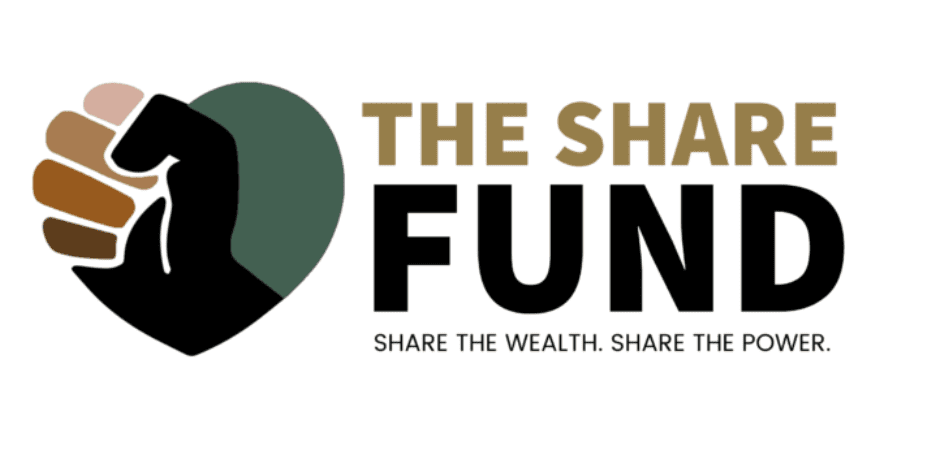
Earlier this year, we shared an update about the work on the Climate Justice Resilience Fund, and their decision to shift grantmaking decisions into the hands of those closest to the climate crisis. This meant taking on the bold approach of establishing a new governing board comprised entirely of practitioners and climate activists. As storytellers, we saw parallels in how we might approach our work.
Now, we turn our attention to The Share Fund, a family philanthropy that is also shifting the power dynamic between high-wealth individuals and grantees.
In a world where the rich are elevated, those with less are told to “do better,” and economic disparities are perpetuated by the enduring legacy of systemic inequality, stories of shifting the power dynamic between those holding the wealth and those attempting to correct societal failings, inspire me. Like the first breath of outdoor air taken in during the shift from summer to fall, I find it refreshing to learn from and work with folks who are navigating away from the suffocating heat of inequities and to a system where all contributions and opinions matter.
The Share Fund is led by a group of Funding Committee members, who all identify as Black, Indigenous, and People of Color (BIPOC). Each member has expertise in racial and gender justice, and they decide where to distribute the unsolicited grants. As explained in a report outlining its first year of grantmaking, a similar group was responsible for the inception of The Share Fund.
There are layers to this drastic shift in traditional grantmaking. First, rather than having potential grantees prove themselves worthy to receive funding, grantees are unaware that this funding opportunity even exists until they receive a “Feel Good Friday” call, informing them that they have received thousands in funds. It’s worth noting that The Share Fund has made more than $1.15 million in grants since its inception in 2021.
Second, by not requiring grantees to complete an application process, the administrative burden shifts from the grantees to the funder. The Funding Committee members carry out the due diligence required to award grantees, alleviating the time-consuming tasks that often drain grantees’ personnel resources. Furthermore, the funding’s source (the Marklyn’s wealth) does not force the Funding Committee members to determine where the funding should go, allowing the members’ freedom to decide where to direct the resources.
Learning from This Form of Participatory Grantmaking
Unlike traditional philanthropic initiatives, The Share Fund does not operate behind closed doors. Transparency is at its core—allowing donors and beneficiaries to engage in meaningful dialogue. Minerva Strategies understands the profound importance of this openness. It fosters trust and accountability, laying the groundwork for productive philanthropic–and storytelling–efforts. By including those at the center of the problems we are working to address, we can foster deeper engagement and better tell stories. This inspires people to respond and act in ways that will create a more equitable world. At Minerva, this commitment to direct community engagement is designed into every client engagement, just as The Share Fund’s approach seeks input from the communities it aims to serve.
Through participatory grantmaking, The Share Fund invites community members to the decision-making table. As discussed in this piece by Funding Committee member Bridgette Hempstead for Philanthropy News Digest, donor-decentralized philanthropy requires prioritizing community members’ networks, knowledge, and experience over the decisions of wealthy donors. Communicators can benefit from this lesson too. We should recognize that the digital notebook is in our hands, but the stories (especially those from historically marginalized communities) are not.
As a former journalist, I’ve often seen how marginalized communities struggle to have their stories heard. Language and dialect barriers, misinterpretations, a lack of cultural understanding, and a rushed process can add to the stifling of those who are at the center of the story. By prioritizing the community and/or interviewees knowledge and taking the time to understand their worldview, we can navigate these challenges with greater ease and create more authentic stories. This is why Minerva’s discovery process is so critical to the start of our client engagements. The time spent learning and understanding our clients and their stakeholders allows us to understand their needs, desires, and value offerings. We often spend time speaking with grantees or beneficiaries about their work to ensure that our communications are thoughtful and aligned with what our clients–and the communities they serve–wish to accomplish.
The Share Fund is just one way of doing philanthropy differently. Just as there are many approaches that philanthropy can take to move more resources and power to communities, there are many ways that storytellers and communicators can approach inclusivity in their work. I’ll dive deeper into this in an upcoming series on approaches to equitable communications but understanding that doing the work to ensure that everyone, regardless of their background, experiences a sense of belonging is a critical starting point. Just as philanthropy should play a role in filling the gaps that the public and private sectors miss, storytellers should also play a crucial role in shaping narratives that promote equity and inclusion.
For more information on The Share Fund’s approach to philanthropy, you can read its recently published report here.